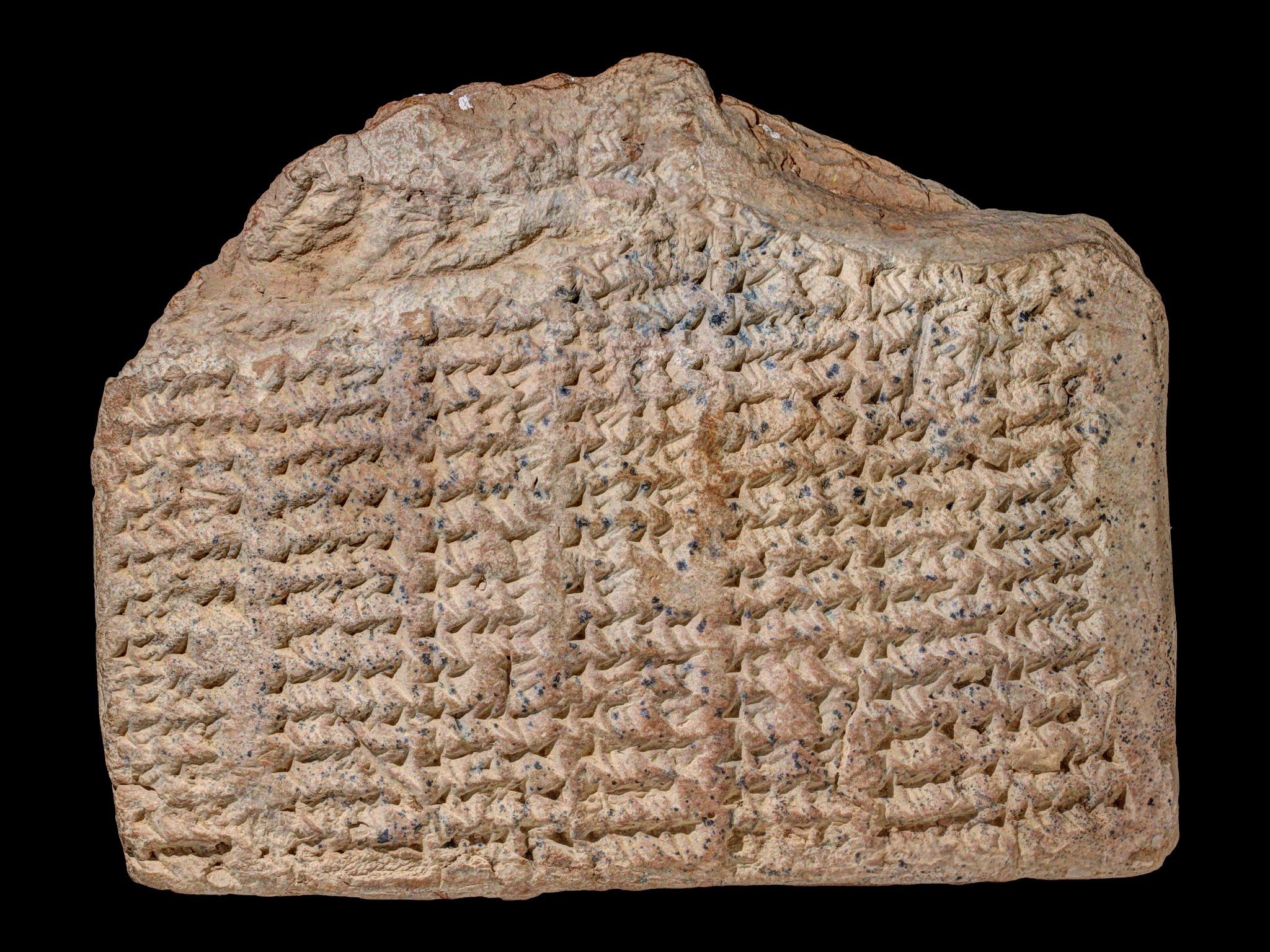CDLI tablet

YBC: 116 (2024-02-19)
Created by: Wagensonner, Klaus
Velocity of the Moon (YPM BC 001878, MLC 1880; Seleucid period (312 BC–AD 63); Babylon or Uruk?; 133 x 102 x 26 mm; clay)
This tablet gives daily records of the velocity of the moon over 248 days. This is measured in degrees per day, relative to the earth and sun—essentially, the tablet tracks how far the moon has moved across the sky from a given time one day to the same time the following day. Because the cultic calendar was based on months beginning with a new moon, and the moon was sometimes hidden by clouds, astronomers needed to be able to calculate lunar positions and movements precisely. Lunar velocity increases and decreases cyclically, and the Mesopotamians had two different systems of approximating these cycles. This tablet uses System B, which approximates lunar velocity as a “linear zigzag.” In this model, the moon’s velocity has defined upper and lower bounds: a minimum below which it never falls and a maximum that it never exceeds. Each day, its velocity increases by a constant amount d until it hits the maximum, then begins to decrease by the same amount d until it hits the minimum, and so on. If the lunar velocity does not hit the bound exactly, the difference between the most recent daily velocity and the bound is subtracted from d, and that number is added to or subtracted from the bound. This can be illustrated by an example from the tablet, where d = 0,18,0 and the minimum velocity is 11,6,35. The tablet uses sexagesimal numbers (for instance, 0,0,60 = 0.1). Column ii, line 8 reads “11,16.” The next entry is reached by subtracting (minimum velocity) 11,6,35 from (previous entry) 11,16, giving 0,9,25; 0,9,25 is then subtracted from d to give 0,8,35. Finally, 0,8,35 is added to the minimum velocity 11,6,35, resulting in a final value for the next entry of 0,15,10. Indeed, line 9 contains 0,15,10. Throughout the tablet, a single ruling indicates that the lunar velocity reached a minimum, and a double ruling that it reached a maximum. There is a diagonal wedge in each line after single rulings, which may have been a checkmark to confirm the calculations were error free. See it in the exhibition “Ancient Mesopotamia Speaks ... Highlights from the Yale Babylonian Collection” at the Peabody Museum of Natural History, New Haven, 6 April 2019 – 30 June 2020 CDLI entry: P363208
credit: Scruton, Benjamin
image credit: Wagensonner, Klaus
Cite this Cdli Tablet
@misc{CDLI2025,
note = {[Online; accessed 2025-10-16]},
author = {{CDLI contributors}},
year = {2025},
month = {oct 16},
title = {},
url = {https://cdli.earth/cdli-tablet/749},
howpublished = {https://cdli.earth/cdli-tablet/749},
}
TY - ELEC AU - CDLI contributors DA - 2025/10/16/ PY - 2025 ID - temp_id_454651884775 M1 - 2025/10/16/ TI - UR - https://cdli.earth/cdli-tablet/749 ER -

